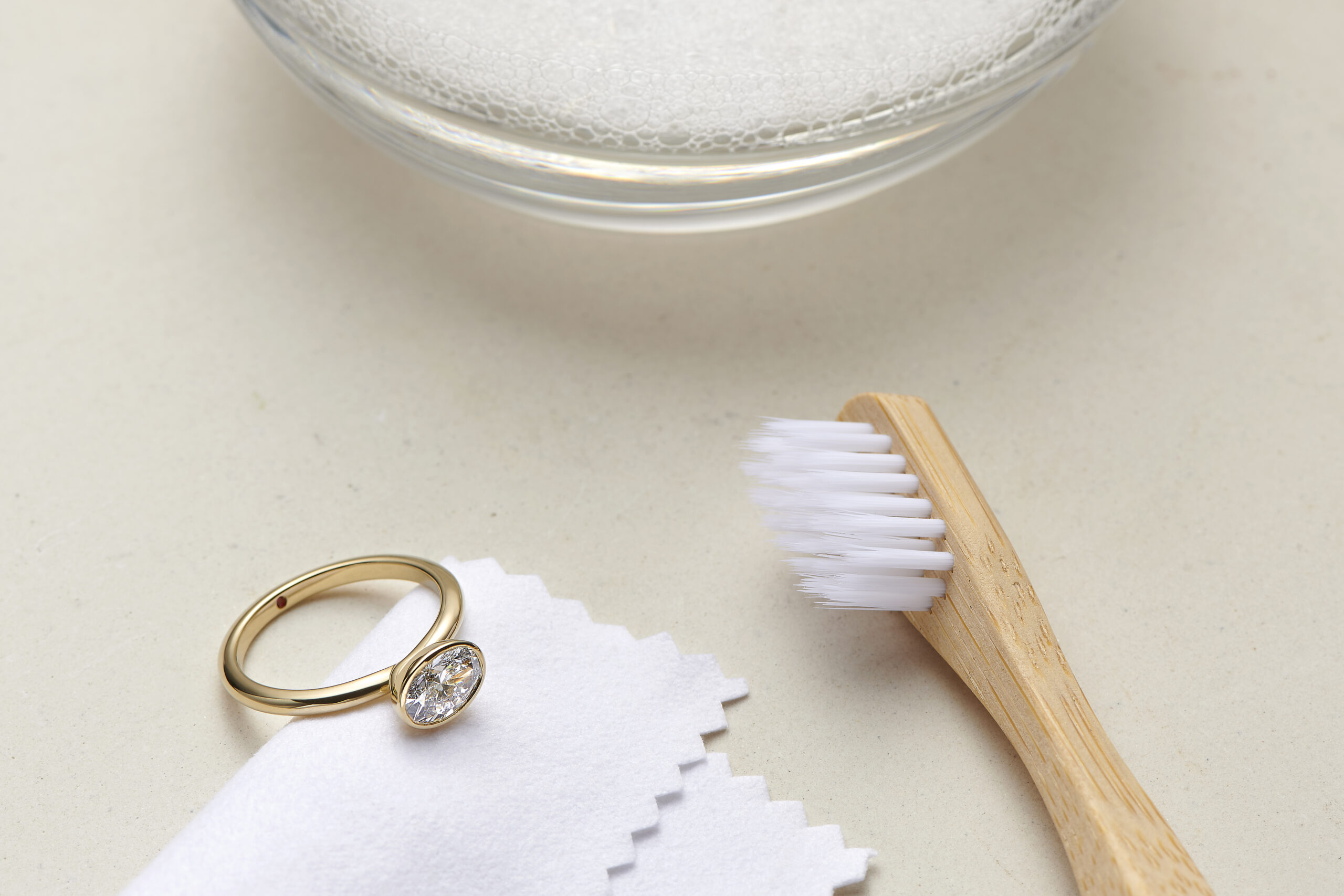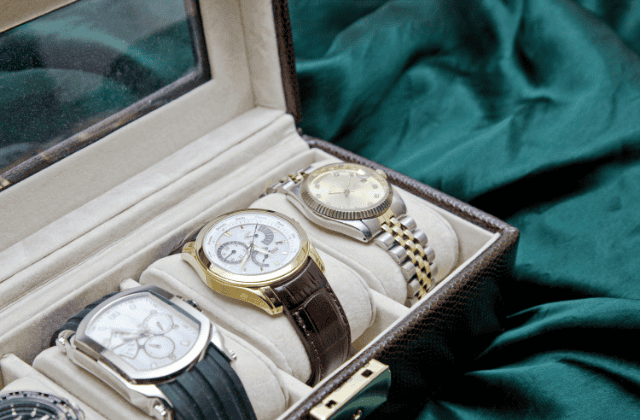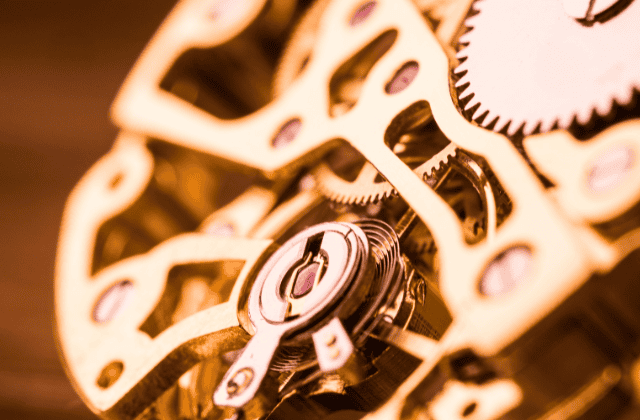Wondering how lab grown diamonds are made?
You’re in the right place.
In this Learning Jewelry guide, I’ll answer the following:

- How do they make lab diamonds?
- Are lab diamonds real diamonds?
- What’s the difference between HPHT and CVD lab diamonds?
Lab Grown Diamonds and Mined Diamonds
Lab grown diamonds have been called numerous different things, like synthetic diamonds, man made diamonds, and cultivated diamonds.
Some of these names cast lab diamonds in a negative light.
A lot of people assume a synthetic diamond is a diamond simulant, like cubic zirconia. Swarovski created diamonds are also diamond simulants.
A lab diamond is a real diamond.
Confusing Names for Lab Diamonds
- Man-made diamond
- Artificial diamond
- Synthetic diamond
- Cultivated diamond
- Cultured diamond
- Engineered diamonds
All of these names can be substituted for a lab made diamond. No matter what the name is, they are all real diamonds. Just make sure you’re purchasing one with proper gem certification.
Lab grown diamonds have been created in an environment that replicates the process of natural diamonds forming in the earth. There are some differences between a mined diamond and a lab created diamond, but most of their properties are the same.
Both mined diamonds and lab created diamonds have the same overall chemical, physical, and optical properties. Both follow the Gemological Institute of America’s 4Cs of diamond quality and can be officially certified.
There’s many reasons why one might choose a lab diamond over an earth mined diamond. Usually it has to do with lab diamond prices or concerns over diamond mining practices, such as concerns over conflict-free diamonds.
How Are Lab Diamonds Made?
There’s two main processes used to create lab diamonds: High pressure high temperature and chemical vapor deposition.
High Pressure High Temperature
The HPHT process is widely known as the first way to create lab diamonds, but that’s not completely true. The CVD process had its roots, but scientists couldn’t produce colorless or larger carat weights in stone. The HPHT method was able to reach those goals first.
To produce an HPHT diamond, scientists recreate the conditions required for an earth made diamond to grow. It wasn’t until the 1950s until HPHT diamonds produced were consistently gem quality.
Most HPHT diamonds come out yellow or brown, then have to have treatments to alter the color. HPHT diamonds can also be modified to create fancy colored lab diamonds.
When creating HPHT diamonds, scientist use a piece of a diamond called a diamond seed. It can be a sliver of a natural diamond, another HPHT diamond, or a CVD diamond.
The diamond seed is placed into a chunk of pure carbon, usually graphite. It’s then placed into a chamber where immense pressure and temperatures surround it. These conditions happen in the ground with natural diamonds.
The temperatures used to create HPHT diamonds climbs over 2,000˚F and pressure around 1.5 million psi. These conditions melt the carbon atoms and cause it to change its structure around the diamond seed. Once the seed is cooled, the diamond crystal begins to grow.
Chemical Vapor Deposition
Chemical vapor deposition is the other process that can be used to create lab grown diamonds.
The CVD process follows the same pattern by starting with a diamond seed. It can also be a natural, HPHT, or CVD diamond seed. It’s important for the diamond seed to come from a high quality diamond in order to produce the best lab diamond.
CVD diamonds only use Type II diamond seeds. In natural diamonds, Type II seeds only occur in 3% of the world’s diamonds. 97% of them are Type I diamond seeds. Type II diamonds don’t have any nitrogen impurities, so they’re able to create completely colorless diamonds that don’t need further color treatments.
The diamond seed gets cut and polished by a jeweler to prepare it for the vacuum chamber. Multiple diamond seed slices can be put in at once. Once the slices are sealed in the chamber, it’s filled with carbon-rich gases, like methane and hydrogen. Inside the chamber, the mixture is heated at low pressure and high temperature.
We’re talking between 900˚C and 1200˚C.
Under regular circumstances deep under the earth’s surface, heating at low pressures within the earth wouldn’t produce gem quality diamonds. Instead it’d be graphite or some other carbon form.
But with the CVD process, some of that hydrogen gets converted to atomic hydrogen. Atomic hydrogen provides the best environment for growing diamonds.
And just like HPHT diamonds, once the CVD diamond has cooled, the diamond crystal begins to grow.
How Can You Tell CVD and HPHT Diamonds Apart?
The average diamond buyer wouldn’t be able to tell an HPHT diamond from a CVD diamond if they were set side by side.
The whole staff at a popular jewelry retailer like Jared or Kay wouldn’t be able to tell you the difference either.
So, how do we know the difference between HPHT diamonds and CVD diamonds?
If knowing the difference between HPHT diamonds and CVD diamonds is important to you, you’ll need to purchase a certified lab diamond. Not all lab diamond certifications will tell you which process was used.
With natural diamonds, we only recommend diamond certifications by the Gemological Institute of America (GIA) or the American Gem Society (AGS). These are the most respected authorities in diamond jewelry.
Both the GIA and AGS have lab diamond certifications, but there are other diamond labs that are recommended too. All International Gemological Institute (IGI) certified lab grown diamonds will tell you which diamond process was used.
The GIA recently revamped their lab diamond grading reports to be more accurate, but they’re not as easily found among diamond retailers. They now also state the process used.

The rest of the diamond industry is following suit. De Beers, has officially announced they will start producing man made diamonds.
A gemologist who studied lab created diamonds can tell the difference between processes. Of course the likelihood you’d ever come into contact with one is pretty much nonexistent.
That begs the question: do you need to know the difference between a CVD diamond and an HPHT diamond?
The answer my friends is not really. From a consumer perspective, neither process affects the important factors when buying diamonds.
Both creation methods can produce colorless and eye-clean diamonds. They have the same chemical composition, physical properties, and optical properties overall. There’s no visible price differences between them either.
In fact, the diamond industry really can’t settle on which process is better. The differences between the diamond processes is found more in the yielded results of mass production, not in the diamond cases.
What Are the Differences Between HPHT Diamonds and CVD Diamonds?
Aside from the production processes themselves, there are some minor differences between the methods.
Production of Colorless Diamonds
By using the Type II diamond seeds in CVD diamonds, they come out colorless. But because Type II diamonds aren’t as common as Type I, CVD diamonds are harder to find. You might find a diamond company that only sells CVD diamonds to be more expensive than one that might sell both types without disclosing it.
The CVD diamond chamber is smaller and uses less energy than what it takes for HPHT diamonds.
Energy Used
A lot of people think lab created diamonds are sustainable and “green”, but that’s not entirely true. The Federal Trade Commission had to warn lab diamond suppliers not to advertise their lab diamond jewelry as sustainable without backing it up.
The truth is, a lot of energy is used to power lab grown diamond chambers. CVD diamonds use less energy than HPHT.
There are some lab grown diamond companies that have 100% sustainable diamonds and they reveal on their websites how they achieve that.
Lab Diamond Inclusions
On average, lab grown diamonds have less inclusions than natural diamonds. Inclusions happen to the diamond crystal while it’s growing.
There’s many different types of diamond inclusion in natural diamonds. Different minerals come into contact with rough diamond beneath the earth’s surface.
Read also: What are the different types of diamond inclusions?
Lab diamonds still get inclusions, but their types are limited. If you were to grab a handful of SI2 lab grown diamonds and a handful of SI2 mined diamonds, lab ones will have better diamond clarity as a whole.
That’s why you won’t see I clarity lab diamonds often. It’s pretty common to find VS diamonds or VVS diamonds for affordable prices and at larger carat weights.
HPHT diamonds have different diamond inclusions than CVD diamonds. The inclusions in an HPHT diamond are metallic inclusions caused by graphite.
Graphite inclusions are less noticeable than mineral inclusions. They are long and needle-like rather than dark blotches.
CVD diamonds are prone to having a mixture of different inclusions. They tend to be more noticeable than HPHT diamonds.
Of course, the best way to make sure you’re getting an eye-clean lab diamond is to buy from a retailer with a 360˚ view. That way, you’re able to observe the diamond for any noticeable inclusions you don’t like.
Blue Nuance and Brown Tints
HPHT lab diamonds can have blue nuance, which is an effect that makes a lab diamond have a blue hue. Blue nuance is different from diamond fluorescence.
Fluorescence shows in UV lighting, but blue nuance happens due to excess amounts of boron within the crystal. If a lab diamond is grown slower, it’s less likely to have blue nuance. But if the diamond producer is rushing through their process, more diamonds will have it.
Overall, most lab diamond buyers don’t know about blue nuance because it’s rarely talked about.
Still, some people want a purely colorless lab grown diamond. Unfortunately, switching to a CVD diamond doesn’t solve the issue.
CVD diamonds produce more colorless diamonds on average than HPHT diamonds, but that doesn’t mean that only completely colorless CVD diamonds are sold.
Instead of having blue nuance like HPHT diamonds have, many CVD diamonds have a brownish tint.
The brownish tint or hues in a CVD diamond happen due to vacancies within the crystal structure. Like blue nuance, a CVD diamond is more likely to be brown when rushed and not grown slowly and carefully.
Neither blue nuance or brownish tints are revealed on any lab diamond grading report. This is one of the reasons why some argue you must see a lab diamond in person rather than picking out online.
However, when put side by side, you can still recognize lab diamonds with either effect, if you know what you’re looking for.
Additionally, as long as you’re buying an engagement ring from a legitimate diamond retailer, you can also be protected by the return policy.
Overall, you shouldn’t fret too much about either of these effects. If they really bother you, you’ll need to be more selective. Honestly, majority of diamond buyers can’t tell the difference. The same goes for diamond fluorescence.
The diamond industry argues back and forth on which lab diamond creation method is better, but there’s really no conclusion. Each has their pros and cons. Both can create colorless diamonds you wouldn’t be able to tell apart.
There is no definite conclusion on which lab diamond process is better. Diamond companies that argue about it are usually trying to push their own sales agenda with no gemological evidence to back their claims.
Do Lab Diamond Companies Make Their Own Lab Diamonds?
Diamond retailers that sell natural diamonds in their inventories don’t necessarily own all their diamonds. This is especially true for online diamond retailers.
The business model of an e-commerce diamond retailer allows them to show hundreds of thousands loose diamonds on their website. James Allen has over 600,000 loose diamonds with 360˚ video available.
But they don’t own all those diamonds. They have deals with diamond wholesalers. That’s why you might be looking at a specific center diamond on the site and find it gone the next day.
That same diamond on James Allen’s website could have been purchased by another diamond buyer over at Blue Nile’s website.
Not every diamond online works this way, but most companies outsource like this. Diamond wholesalers use the same diamonds on multiple online retailer websites.
There are some who have exclusive in-house diamonds, like Whiteflash. Other specialty diamonds like James Allen’s True Hearts, are unique to the company.
Likewise, not all lab created diamonds are made in-house. Only some companies actually create their own lab diamonds to sell. In fact, most don’t.
Just because a lab diamond isn’t created by the company who sells it, doesn’t mean that it’s a bad diamond.
Diamond Foundry lab diamonds are very popular because of their industry experiences and deals with many online retailers. Brilliant Earth sells Diamond Foundry lab diamonds.
But, if the retailer you’re shopping online at is a brand new online store-you might want to hold off and buy from someone with a better reputation. Anyone can make up a store and make deals with wholesalers.
You want to buy from an online retailer that knows their stuff and has diamond industry experience.
Legitimate Lab Grown Diamond Retailers Online
So, who should you buy lab grown diamonds from?
There are so many diamond retailers online popping up like daisies all over the web. Here’s a few of the best places to buy lab grown diamonds that receive our stamp of approval. They are legitimate engagement ring and wedding ring companies that sell certified diamonds.
James Allen

- 360˚ view on all lab diamonds
- IGI certified tells you which process
- Free engagement ring and wedding ring lifetime warranty
Brilliant Earth

- Carries Diamond Foundry lab diamonds
- Reveals production methods
- Uses recycled metals and shipping materials
Conclusion
In conclusion, lab-grown diamonds have become increasingly popular in recent years due to their similar physical and optical characteristics to mined diamonds, as well as their ethical and environmentally friendly production process. They are made by using either a High Pressure High Temperature (HPHT) or a Chemical Vapor Deposition (CVD) method.
While lab-grown diamonds may not have the same historical or sentimental value as mined diamonds, they offer a more sustainable and affordable alternative for consumers who want to own a diamond.




